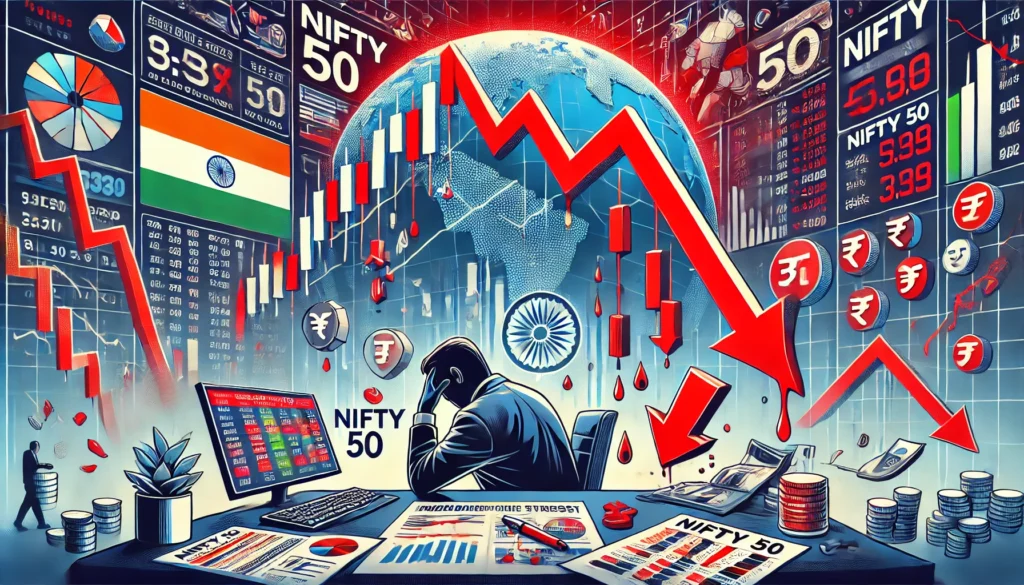What is CRR and SLR?
CRR and SLR may be mentioned whenever the RBI tightens its regulations. Banks are required to abide by these regulations. But why are they important, and what do they mean? Let’s put it in simple words
1. CRR – Cash Reserve Ratio
CRR is an acronym for Cash Reserve Ratio. According to this regulation, banks are required to retain a specific proportion of their client deposits in cash at the Reserve Bank of India. This sum cannot be used for investments or loans.
As of June 6, 2025, the CRR rate was 4.00%. This implies that ₹4 must be retained by the RBI for every ₹100 in deposits that a bank receives.
Why is CRR Important?
- maintains banks’ stability by making sure they always have cash on hand.
- Controls inflation: RBI slows spending by lowering the amount of money banks can lend by raising CRR.
- Prevents unexpected crises: Banks have cash on hand in case a large number of customers withdraw at once.
Example from Real Life:
₹4,000 must stay with RBI if Bank of India receives ₹1 lakh from clients. This keeps banks safe even when a lot of people take money out at once.
2. SLR – Statutory Liquidity Ratio
Statutory Liquidity Ratio is referred to as SLR. Under SLR, banks retain cash or government-approved assets like bonds and gold on hand, as opposed to CRR, where funds are transferred to the RBI. This is to guarantee banks’ continued financial stability.
SAs of June 6, 2025, the SLR rate was 18.00%. This implies that ₹18 of ₹100 must be held in cash or other secure assets.
The Reason RBI Establishes SLR:
- Financial stability: Makes sure banks don’t take the chance of lending all deposits.
- Inflation tool: Banks can lend less when SLR is raised.
- Customer Protection: Banks remain secure even in times of financial strain.
Example:
A bank must hold ₹18 lakh in safe forms if it receives ₹1 crore in deposits. The bank cannot use that money for loans or risky investments.
3. Why Do Banks Keep Money with RBI?
CRR and SLR are instruments used by RBI to:
- To safeguard banks, use cash buffers.
- Control inflation and the flow of money.
- Verify the RBI’s capacity to manage liquidity and trust.
📌 How It Affects You:
- If the RBI raises CRR/SLR, banks will have less money to lend, so they might raise loan interest rates.
- If the RBI lowers CRR/SLR, banks might lend more, which could lead to lower EMI rates.
- While a higher CRR/SLR can reduce inflation, it may also impede economic growth and loan availability.
Example in Common Parlance:
Think of your bank as a retailer. If the government (RBI) requires you to keep ₹10 of every 100 in the store locked in a safe (CRR) and ₹18 in a display case (SLR), then only ₹72 can be used for business purposes. If the rule is changed to allow you to use ₹90, you will have less emergency backup, but you will be able to sell more.
📊 Quick Comparison
| Feature | CRR | SLR |
|---|---|---|
| What banks must keep | Cash with RBI | Cash or approved assets |
| Current rate | 4.00% | 18.00% |
| Money available to lend | Less | Less |
| Affects | Bank liquidity | Bank stability |
Also read: What is Repo Rate?
🔗 Want to Learn More?
Visit the official Reserve Bank of India website for the most recent CRR & SLR statistics as well as comprehensive policy announcements.
📝 Final Thoughts
Despite their technical appearance, CRR and SLR affect loan availability, deposit safety, and bank stability. By understanding these rules, you can control loan rates, inflation trends, and Indian banking confidence.
Stay tuned, upcoming articles will discuss additional tools such as MCLR and Repo Rate, as well as how the RBI uses each of these to manage the economy!



